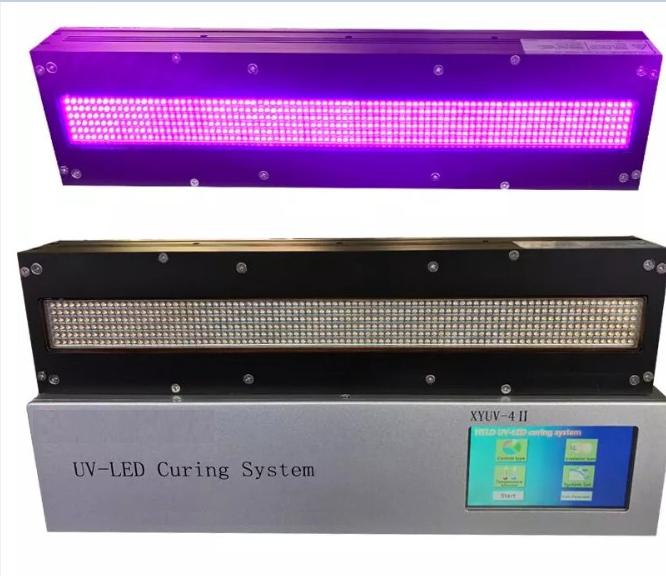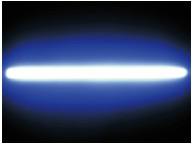At present, the surface curing used in the the market is mainly the peak wavelength spectrum of 365nm and 395nm. What kind of spectrum is required to achieve the best results, which need to be determined to the glue or ink used. It can through consulting the glue or ink supplier. In addition, because the wavelength of LED UV curing light is relative to traditional UV lamp, the wavelength of the spectrum is much more uniform. If you want to achieve a better effect, when choosing UV glue and UV ink, you should consult the supplier about the type of UV LED light with a single wavelength.
2.Light Energy
For UV screen printing curing light source, UV LED energy (mJ/cm2) equates UV intensity (mW/cm2)*irradiation time (s). For the precise control of UV LED intensity and irradiation time, it can control the energy of UV LED accurately. For control of exposure time, Guangdong SpaceLight Co., Led. UV LED curing light, built-in microprocessor, can set the exposure time and various control mode, which are out-of-the-box without preheating.
 |
| https://www.leduvcuring.com/ |
3.Strength Distribution
UV intensity of UV LED dryer is very uniform. UV irradiation intensity is considered when designing products. In the case of Guangdong SpaceLight Co., Ltd. curing light source, with imported high power LED and high-tech optical lens, unique software control program, the range of radiation intensity is between 1000mW/cm2 and 8600mW/cm2.
4.Safety and Temperature
Advanced UV LED with safety lock, after setting the control mode, can close the light source automatically to protect the user’s safety. Good cooling chip technology and microprocessor function can effectively control the temperature rise. It needs special attention, the temperature of traditional mercury lamp does not have a good control of the light source, which will cause the bulb burst serious hidden danger.
5.Stability
This point of tradition process is very different to improve. Generally, it is the accumulation of industrial experience. A special machine usually is not equipped in a laboratory. An unstable light source will seriously affect the test progress. However, Guangdong SpaceLight Co., Ltd. has strict appearance testing and years of research and development design experience, can ensure the stable use of UV LED light source.






















